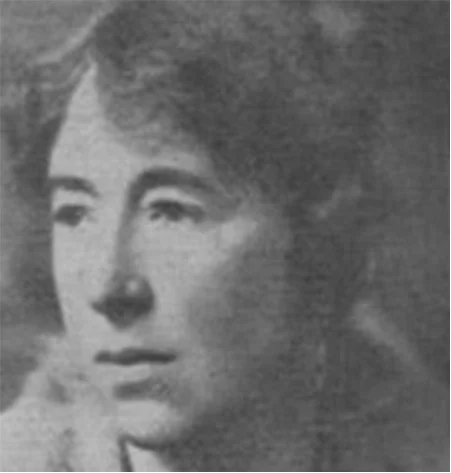Winifred M. Letts
Playwright/ Poet/ Novelist/ Nurse/ Wartime Masseuse
Manchester & Dublin
1882 - 1972
“There are two things you did as Miss Letts which are no longer appropriate, now that you are Mrs Verschoyle – attend the Arts Club on Fitzwilliam Street and swim at Seapoint Tower” the words of 67 year old William H. Foster Verschoyle, to his new wife, Winifred Letts. At the time, Winifred (Win) was 44 years of age - a published poet, novelist, playwright and a qualified masseuse who had seen, and been through, the horrors of WWI. And Win was a lady who knew her own mind.
At 16, she persuaded her parents to allow her to move from boarding school in the English midlands to Alexandra College, Dublin, because she had loved so much the holidays she had spent in Ireland, at her mother’s home in Knockmaroon, on the edge of the Phoenix Park. At 25, she challenged what she described as her ‘Unionist, Protestant’ upbringing by attending the Abbey Theatre and, after experiencing a performance of Synge’s ‘Riders to the Sea’, she felt inspired to start writing.
What followed were two plays that were both accepted by The Abbey, Ireland’s National Theatre. She was only the second woman – the theatre’s co-founder, Lady Gregory having been the first - to have her work staged at the Abbey. She went on to publish nine novels and a book of poetry throughout the following nine years. And then the first world war started.
‘The Spires of Oxford and Other Poems’, published in 1917, dealt not with the glory of war, but with the gore – Win wrote about the individuals affected by wartime horrors; the boy who gave his precious wits, the young man lying helpless in a hospital bed, the deserter shot at dawn. Win saw this reality through her work as a VAD (voluntary aid detachment nurse) and later, through her work as a masseuse, treating military personnel who had lost limbs. Her poetry predates the protest poetry of Wilfred Owen and Siegfried Sassoon.
After her marriage to William in 1926, Win moved into one of his Dublin properties, 19 Fitzwilliam Square. Win survived the gloom of town life by befriending children who lived on the lane at the back of the houses, and by spending weekends in Kildare, on William’s country estate, immersed in the beauty of nature. She was active with the Fresh Air Fund, Wild Flower Society, Irish Women Writers’ Club and many charitable organisations.
In a 1957 interview in The Irish Times, Win described herself as “a period piece, a has-been, totally unknown to this generation.” In 1969, she told Maeve Binchy that the only reason she was interesting was because she knew so many of the people Ireland then cared about. For seventy years, Win’s life and works slowly disappeared from view. Until now.
Our thanks to Bairbre O'Hogan for researching and writing up this fantastic piece.
Sources:
Portrait Gallery The Irish Times 30 Nov 1957: 10.
The Irish Times 22 April 1969.
Letts, W M Knockmaroon 1933.
Ireland of the Welcomes, July-August 1952.
https://vad.redcross.org.uk/Card?sname=letts&id=133419&last=true (accessed 01-06-2019).
